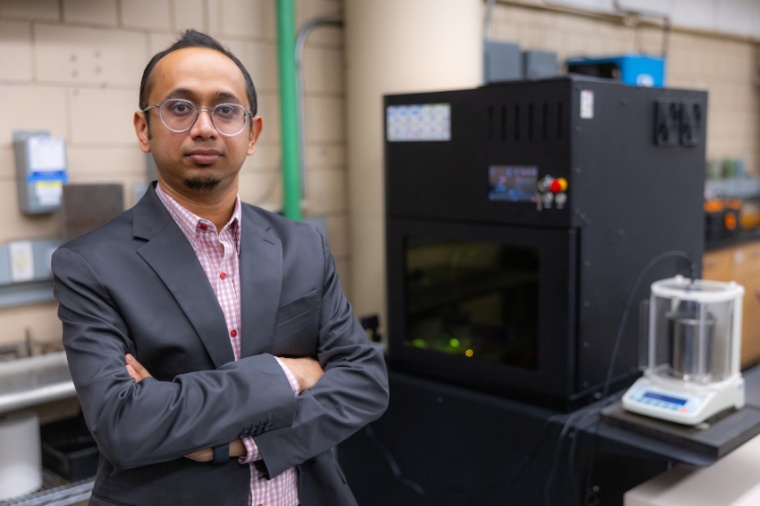3D printing of tungsten parts for nuclear reactors
$1 million DOE-grant to study additive manufacturing to create shields and components for extreme conditions.
Sougata Roy has received a four-year, $1 million grant from the U.S. Department of Energy to study the possibilities of using additive manufacturing to create shields and components that could be used in nuclear reactors. “This work in advanced manufacturing, particularly in using additive manufacturing, is about making a difference,” said Roy from the Iowa State University. “One of the major things that excites me about this project is working with nuclear energy,” Roy said. “It’s the largest source of clean power in the United States. This emission-free electricity is important for the future.”

The grant will allow Roy to assemble what he calls a DREAM-TEAM project: “Developing a Robust Ecosystem for Additive Manufacturing of Tungsten for Extreme Applications and Management.” Joining Roy on the project are Yachao Wang, an assistant professor of mechanical engineering at the University of North Dakota, and researchers from three of the U.S. Department of Energy’s labs: Ames National Laboratory on the Iowa State campus, Argonne National Laboratory in Illinois and Oak Ridge National Laboratory in Tennessee.
The researchers will work with tungsten, a top material candidate for the inner walls of fusion reactors because it maintains strength at high temperatures, has a high melting temperature, resists erosion under high-energy neutron irradiation and retains low levels of radioactive tritium. But, Roy said, tungsten is expensive for conventional manufacturers to work with because it’s hard and brittle. So, they’ll try 3D printing tungsten-based alloys using laser powder-blown directed-energy deposition. It involves using a laser under oxygen-controlled conditions to process tungsten powder and, layer by layer, print the metal.
Roy, who has experience 3D printing other steel-based alloys for nuclear energy applications, said the project will allow him to purchase a new instrument to characterize the mechanical properties of the printed samples. Roy said the most unique part of the project isn’t the actual printing, it’s the physics-based modeling and computational simulations of the printing process that will complement the experimental work. The modeling and simulations, which will include work with machine learning and artificial intelligence tools, will help researchers establish the theories behind their experimental results. The simulations will also help them develop recipes for tungsten alloys that can withstand the extreme conditions inside a nuclear reactor. “We’ll start with pure tungsten,” he said. “Eventually we’ll develop new alloys to resolve this cracking challenge.” (Source: Iowa State U.)











